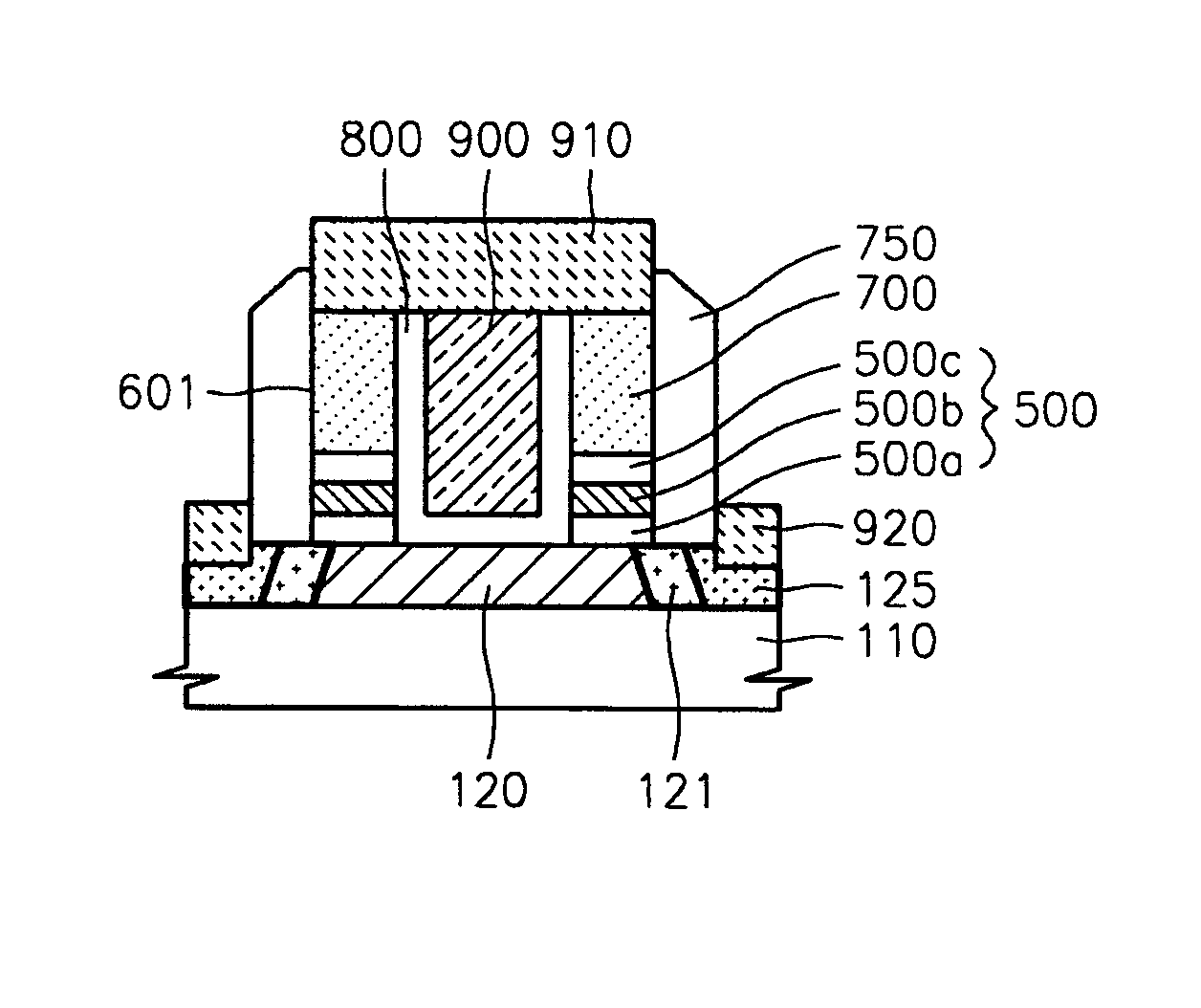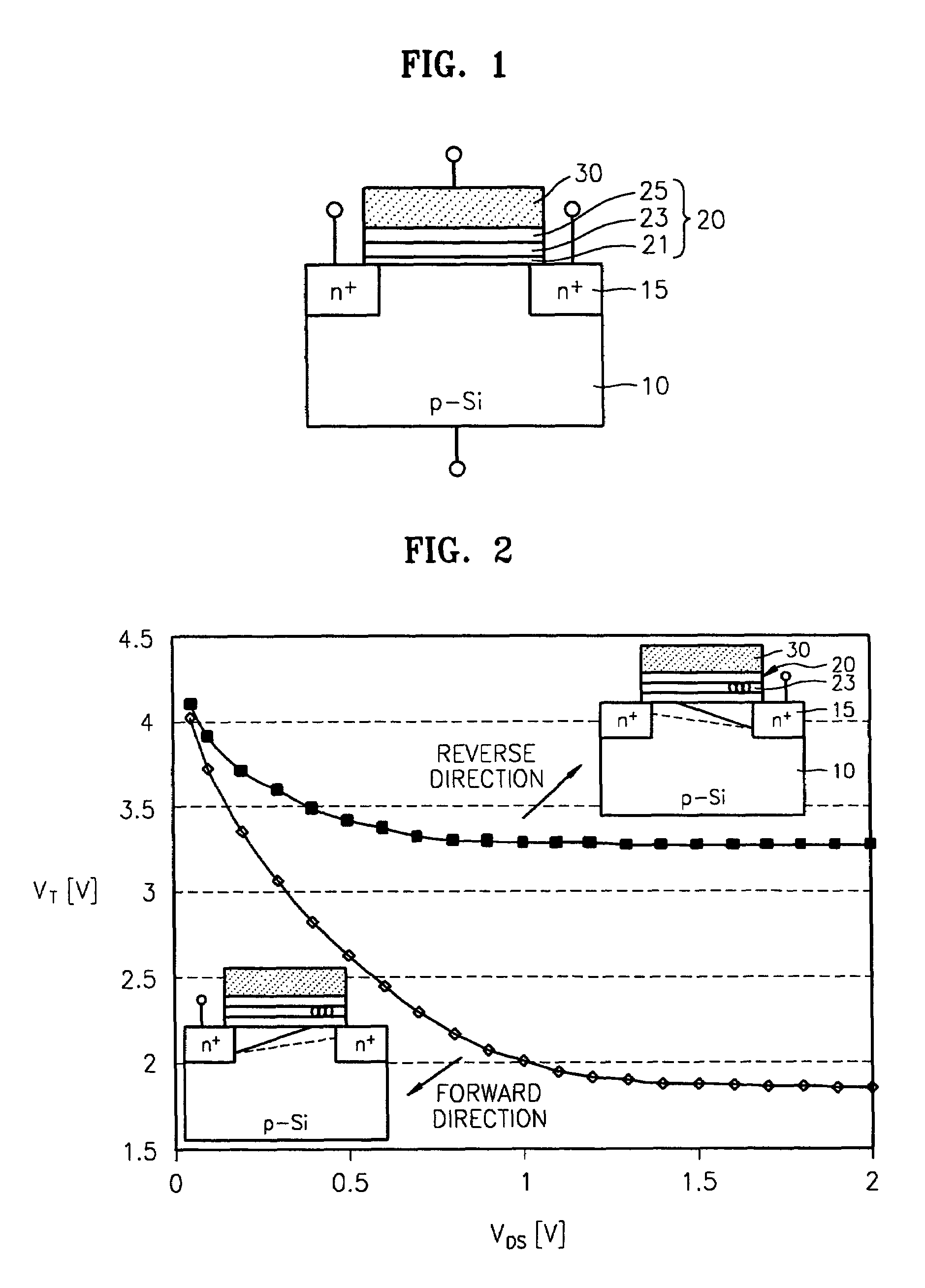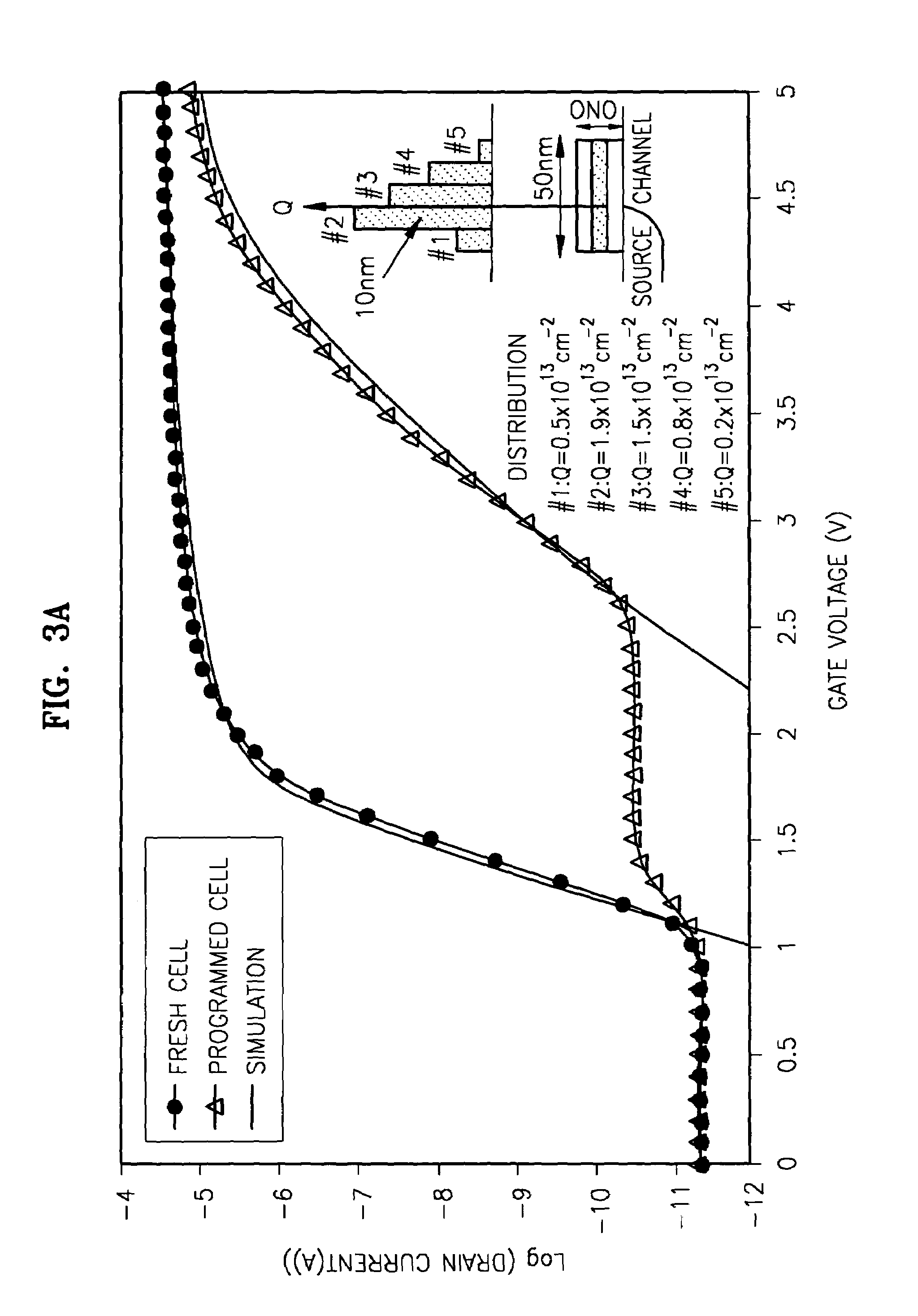Method of manufacturing twin-ONO-type SONOS memory using reverse self-alignment process
a sonos memory and reverse self-alignment technology, applied in the direction of semiconductor devices, electrical equipment, transistors, etc., can solve the problems of deteriorating the endurance of sonos, the complexity of the patterning structure in which the floating gate and the control gate are stacked, and the photolithographic and etching process for forming hyperfine devices is about to reach the technical limits, so as to achieve stable 2-bit characteristics
- Summary
- Abstract
- Description
- Claims
- Application Information
AI Technical Summary
Benefits of technology
Problems solved by technology
Method used
Image
Examples
embodiment 1
[0073] a Twin-ONO-type SONOS with a Single Gate
first embodiment
[0074]FIGS. 5A through 5K are schematic cross-sectional views illustrating a twin-ONO-type SONOS memory according to the present invention.
[0075]Referring to FIG. 5A, as a starting material for manufacturing a SONOS memory, a p-type substrate is prepared. For example, as shown in FIG. 5A, a silicon (120)-on-insulator (110) (SOI) substrate is prepared. Here, the SOI substrate exhibits p-type conductivity and serves as a p-type substrate. However, a typical bulk silicon substrate may be substituted for the SOI substrate. Afterwards, a field region is formed using a device isolation technique on the silicon layer 120, to define an active region. The device isolation technique may be, for example, a shallow trench isolation, a self-aligned shallow trench isolation, or a LOCOS.
[0076]Referring to FIG. 5B, an oxide-silicon-oxide (ONO) dielectric layer 500 is formed on a Si channel region of the silicon layer 120. The ONO dielectric layer 500 can be formed by a known method and substantiall...
embodiment 2
[0091] a Twin-ONO-type SONOS with 3 Gates
[0092]The second embodiment, unlike the first embodiment, deals with a triple-gate-type SONOS memory device. The same reference numerals in the first and second embodiments represent the same element.
PUM
 Login to View More
Login to View More Abstract
Description
Claims
Application Information
 Login to View More
Login to View More - R&D
- Intellectual Property
- Life Sciences
- Materials
- Tech Scout
- Unparalleled Data Quality
- Higher Quality Content
- 60% Fewer Hallucinations
Browse by: Latest US Patents, China's latest patents, Technical Efficacy Thesaurus, Application Domain, Technology Topic, Popular Technical Reports.
© 2025 PatSnap. All rights reserved.Legal|Privacy policy|Modern Slavery Act Transparency Statement|Sitemap|About US| Contact US: help@patsnap.com



